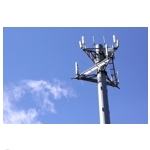 After ignoring a previous inquiry from Telecompetitor on the topic, U.S. Cellular confirmed yesterday in an email to us that the company has deployed LTE using 700 MHz A-block spectrum in some markets. The company has A-block and other spectrum holdings and previously appeared reluctant to confirm it had used the A-block.
After ignoring a previous inquiry from Telecompetitor on the topic, U.S. Cellular confirmed yesterday in an email to us that the company has deployed LTE using 700 MHz A-block spectrum in some markets. The company has A-block and other spectrum holdings and previously appeared reluctant to confirm it had used the A-block.
This is good news for small rural carriers that also hold A-block spectrum but have delayed deployment because they have had difficulty obtaining devices for use on the network because of the relatively small volumes required. The small carriers should now be able to use some of the same devices U.S. Cellular has obtained.
Small A-block licensees still face another key challenge however. There is still no nationwide LTE network on which they can roam.
U.S. Cellular operates primarily in the central U.S. The company that holds unused A-block spectrum in many of the nation’s largest markets – including New York and Los Angeles – is Verizon Wireless. Verizon recently tried to sell this spectrum but sold only a handful of licenses in small markets.
Surprisingly, at a time when we’re hearing so much about a spectrum shortage, Verizon was unable to find a major buyer.
Why?
Interference issues
The answer to that question and to why U.S. Cellular initially appeared reluctant to talk about the A-block is probably the same – and it starts with a move AT&T made several years back. AT&T holds a lot of spectrum in the 700 MHz B-block and lower C-block, which are adjacent to the A-block. Initially those three spectrum blocks were supposed to share a single spectrum band, which meant they would have used common components. But several years ago, AT&T – citing interference concerns — persuaded international standards bodies to create a new spectrum band that removed the A-block from the band that included the 700 MHz B- and lower C-blocks.
I’ve asked a number of knowledgeable people about interference concerns involving the A-block and the consensus seems to be that there might be issues in perhaps two to four of the 30-or-so markets that have a TV broadcaster using Channel 51, which is adjacent to the A-block. (To put things in perspective, the U.S. has more than 200 TV broadcast markets in total.)
In its email to Telecompetitor yesterday, U.S. Cellular said the company has not deployed LTE in the A-block in markets that have a TV broadcaster using Channel 51.
Of the people I spoke with about the A-block, the one who seemed to take potential interference problems most seriously was Roger Entner, lead analyst for Recon Analytics. Entner believes that if the FCC presses Verizon Wireless on A-block build-out dates, the carrier will give back the A-block spectrum rather than build it out.
Verizon has offered mixed messages about its A-block build-out plans. After the company failed to find a major buyer a Verizon spokeswoman told Telecompetitor the company plans to build out the A-block but that the company’s priority is on other spectrum bands. But when we subsequently asked if the company had applied for a waiver of a December 2013 deadline to have 35% of its spectrum built out, a spokesperson said the company had not made such an application.
Unlike Entner, Andrew Seybold — CEO and principal analyst for Andrew Seybold Inc. — does not see A-block interference as a major concern. He told Telecompetitor earlier this year that any problems involving the A-block would be “marginal” and would impact very few markets.
In a more recent interview, Seybold suggested that AT&T may have had another reason for pursuing and defending the split-off of the A-block from its own spectrum blocks. “AT&T and Verizon are fierce competitors,” he said. “They want people to use their own network.”
If devices working on one carrier’s network could also work on another carrier’s network, the carriers could be forced to enter into roaming agreements with one another — and large national carriers such as AT&T and Verizon don’t want that, Seybold said. Allowing other carriers to roam on their networks would complicate capacity planning issues, he said.
Currently each of the four major national carriers is deploying LTE in a different spectrum band, eliminating the possibility of roaming with one another – and they all seem to like it just fine that way.
What’s the solution?
Perhaps the large national carriers are wary of the A-block for a variety of reasons – including possible interference issues and a reluctance to support roaming. And considering the lead Verizon has taken in deploying LTE, roaming concerns appear to loom particularly large for that company, which has mounted various legal challenges against data roaming requirements.
So what’s the solution for the A-block?
The FCC hopes to free up TV broadcast spectrum through an auction that would enable broadcasters to surrender some or all of their holdings and share in the auction proceeds. As part of that process, any broadcasters using Channel 51 that don’t surrender their spectrum would likely be moved to a lower part of the spectrum band. And I’ve heard talk that Channel 51 might be cleared in advance of other bands. Then again I’ve also heard concerns that the entire auction could fail – a scenario that would not be without precedent.
Do we have to wait until Channel 51 is cleared before Verizon – or another national carrier that might purchase Verizon’s A-block spectrum — can start building out the A-block?
I don’t think so. Even assuming Channel 51 creates problems in a few markets, it would appear that there are many other markets where A-block equipment should work fine, as U.S. Cellular’s deployment demonstrates.
And if we put aside roaming reluctance for a minute, it would seem that Verizon (or someone who might buy Verizon’s spectrum) could benefit from deploying LTE in the A-block in markets where Channel 51 is not a problem. It’s true that large national carriers want to offer products that work nationwide and in this scenario, the A-block – initially at least – would not be a nationwide solution. However, all of the major carriers are planning to deploy LTE in multiple spectrum bands, with devices designed to automatically determine which band to use based on signal strength — so in markets without an A-block network, the devices would just use a different band.
One argument against this approach has been that cellular devices can only support a certain number of spectrum bands. But devices are already on the market that can support up to six bands, and that number should continue to climb. Wayne Lam, senior analyst with consulting and research firm IHS/iSuppli, told me recently that components supporting up to 16 bands should be available within a year.
If mobile bandwidth demand continues to climb steeply, network operators are going to have to look seriously at expanding the spectrum bands that devices can support as a means of expanding mobile network capacity.
And as the need to use more spectrum bands becomes more critical, it appears unlikely that each of the nation’s four largest carriers will forever maintain a spectrum portfolio that has no overlap with other carriers. Before long both Verizon and T-Mobile will have LTE in the AWS band. And eventually the downside to using the A-block (i.e., sharing it with other carriers) will likely be outweighed by the need for more capacity.
One open issue that still remains, however, is whether AT&T can restrict devices that support the A- and B-block from roaming onto its B-block or lower C-block network. (Some smaller carriers hold both A-block and B-block spectrum.) The FCC has been considering taking steps to enhance interoperability across the lower 700 MHz band but it’s not clear what those steps might be.
The upshot is that the A-block problems eventually should become a thing of the past. But it could still take a few more years. And it’s unfortunate that it had to take so long.
Let’s hope the industry learns from this experience and takes appropriate steps to prevent this sort of situation from repeating itself.

